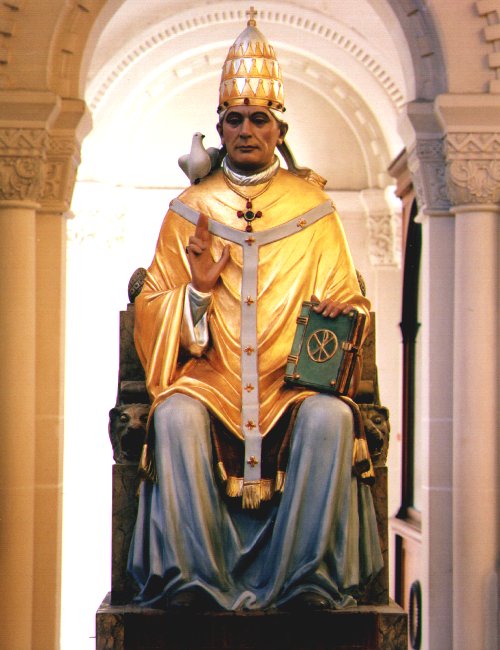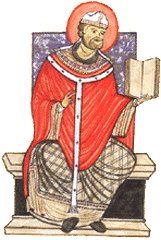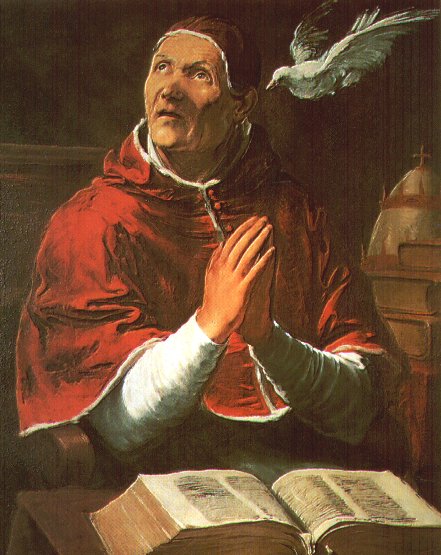
Parish Church
Sliema, Malta

 |
Parish Church Sliema, Malta |
 |
 |
540 | Gregory born. |
| 573 | Gregory was appointed Praefectus Urbi (Prefect of the city of Rome). | |
| 575 | Gregory founded the Monastery of St. Andrew. | |
| 578 | Gregory appointed one of the seven Regionarii (deacons) of Rome by Pope Benedict I. | |
| 579 | Gregory was sent by Pope Pelagius II as apocrisiarus (residential ambassador) to the Imperial court in Constantinople. | |
| 586 | Gregory returned to Rome and become abbot to the Monastery of St. Andrew. | |
| 590 | Gregory became Pope (consecrated on the 3th of September) | |
| 593 | Gregory wrote the four books of Dialogues. | |
| 596 | Gregory sent Augustine and other monks to evangelize the English. | |
| 604 | Gregory died (12th of March). | |
| The Statue of our Patron was sculptured in wood by Angelo Righetti during the year 1952 in Brescia, Italy. It was a donation of Alfred Vella and was used for the first time in the same year during the feast procession. | ||
|
|
|
| (Saint Gregory
the Great), c.540-604, pope (590-604), Doctor of the Church. A Roman prefect,
he became a monk and, although he resisted promotion, eventually pope.
His rule was notable for the enforcement of papal supremacy and the establishment
of the temporal position of the pope. He attacked Donatism in Africa, refused
to recognize the title ecumenical of the patriarch of Constantinople (an
act that helped split East and West), and treated (592) with the invading
LOMBARDS after the Byzantine exarch failed to defend Rome.
Gregory encouraged monasticism, made laws for the lives of the clergy, and sent missionaries to England. His writings include letters, commentaries on the Book of Job, saints' lives, and Pastoral Care. He also contributed to the development of Gregorian chant or PLAINSONG. Feast: September 3rd.  |
In the three centuries following the death of Saint
Benedict, there emerged in the Western Church a marvelously unified tradition
of liturgical music known as Gregorian Chant, taking its name from the
sixth century Pope Saint Gregory the Great, who did much to promote the
use of the chant.
Characterized chiefly by its purely melodic form, without even the simplest harmonies, Gregorian Chant is sometimes known as "plainsong"; the word "plain" being used to distinguish it from the later harmonic music rather than to denote any lack of charm or interest. Noteworthy also is the unmeasured or "free" rhythm: the melodies do not have the regular "beat" which is characteristic of nearly all the music of the last millennium. This tends to give the music a very spiritual quality, since it has no echoes of dance or martial display and certainly not of contemporary popular music. Today we are fortunate in having a very rich selection of Gregorian Chant available in books, largely owing to the work of the monks of the Abbey of Solesmes in France. For a century and a half they have made careful researches into the most authentic traditions of the chant, comparing manuscripts from all over Europe, in order to produce a selection of liturgical books that can be used for all the monastic Divine Office and for the celebration of the Mass. |
| Depicts of our Patron |
 |
 |
 |
 |
 |
 |
 |
 |